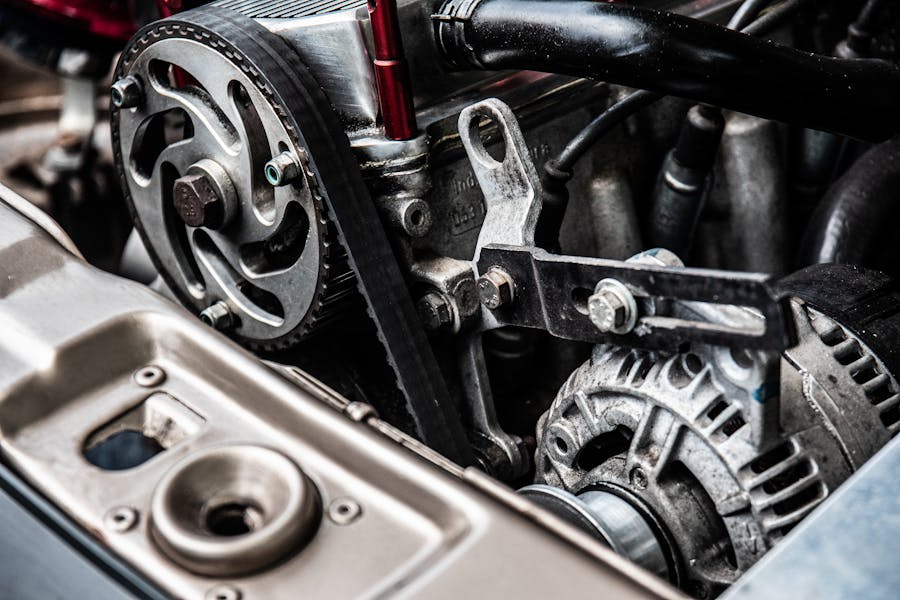A customer comes in during their half-hour lunch break expecting to get synthetic oil, only to get it mixed up with a drain plug socket. It’s a familiar problem, right? An amateur tech can easily make that mistake. A mistake that can cost you a regular (or even a new) customer. Speed and efficiency are the two words that best describe a lube bay ‘cause they thrive on these factors. Over 60% of customers won’t return after a poor experience. They prefer speed and communication more than price.
Customers expect quality oil changes, among other services but when the shop’s engulfed in complete chaos from the lack of structure, nothing goes right.
Delayed oil deliveries and miscommunication are common, especially when ticket handling is inefficient.
In this blog, we will focus on the ways you can streamline the lube bay to eliminate downtime and keep the incoming traffic flowing smoothly.
Proven tips to make your lube bay more profitable
Lube bay is easy money (and who doesn’t love bringing in more?), which is why repair shops and garages want to offer a one-stop destination that offers all services. For customers, it’s super convenient to get their car repaired, inspected, and get the oil changed all in one place.
As an owner of a repair shop, you can benefit a lot from having a streamlined lube bay. Here are proactive, proven strategies that can help you make your bays more profitable:
1. Follow with a checklist
Something as simple as a checklist of items and processes can save a day! It means bringing in serious profit per day. To offer a guaranteed quality, the service needs to be highly efficient for the customer on every visit. Using a comprehensive checklist will help you achieve this goal, so that time is not wasted.
Now, manual checklists are outdated and time-consuming. You can’t take a printout for every repair job you get; that’s a waste of paper. An efficient and long-term solution to this is investing in an oil change software that offers built-in checklists for every type of service you offer.
Whether it’s a standard oil change, a synthetic blend, or a vehicle inspection, technicians can follow the steps easily. This way, you can ensure a structured workflow is being followed, resulting in transparency for the customer.
2. Build relationship
Making a quick lube profit is one thing, but this is not the only motivator (or rather, shouldn’t be). Focus needs to be on serving customers as relationship builders. An oil change is a necessary basic service. Every vehicle owner should include this service in their regular maintenance checklist.
If you are offering a lube bay, it brings in the opportunity to connect with the vehicle owners. A customer may come in for maintenance or an inspection. You get to know customers and show them the quality service by actually offering them the add-ons. It’s a full-service package that can retain a customer for a longer period.
3. Choose the right vendor
A supportive vendor plays a crucial role in running a lube bay. The quality of the vendor affects the oil change service. For example, the number of businesses a vendor works with? Do they offer training or not? Do they ship supplies on time? Such questions should be asked before committing to one.
Because not all suppliers associate themselves with the auto repair shops, while some can’t work with high-capacity orders, especially if you are a large business. So, be clear whether you need one or more than one vendor for supplies to streamline the supply chain.
4. Plan the layout
A dedicated space for the lube bay is important to run it effectively. A quick lube area is not for every garage. If you have a total of six employees, it will be hard to meet the financial goals and keep up with the oil changes. But if you have a higher bay count and room for expansion, revenue is likely to grow.
Your shop must have the capacity for a drive-thru. Plus, having the right space to store tools is important so that they are easily accessible during the process. Determine whether you need a lift or a pit to be installed. Plan what the customer will be doing during an oil change. Will they be waiting in the car or the lobby?
It’s good to have enough space to add a drive-thru to increase the car count. The layout should be roomy enough for quick expansions when needed.
5. Marketing efforts
While it’s a good idea to have a dedicated lube bay, almost everything is moving online now. This means low traffic in-house. A lot of customers follow the quick-lube network blindly and never seem to appear in the garage for a visit unless it’s a complex issue.
To counter this issue, you can focus on the marketing strategies. Introducing a weekly or monthly newsletter for maintenance reminders, mansplaining the services being offered, and even offering discounts can be added. Offering multiple-tier services can be beneficial too; customers can choose from a basic to premium level oil change.
Plan it smartly
You might not be a standalone repair shop, which brings the opportunity to your door to add more services without adding more expenditure. However, you need the right set of tools, workforce, and vendor to make the lube bay work. If planned the right way, you can increase your earnings even in low seasons. So, plan it out wisely to see what works best for you.

